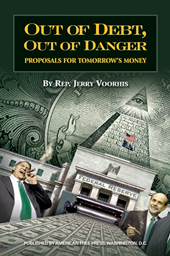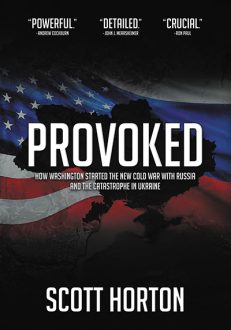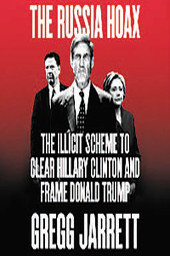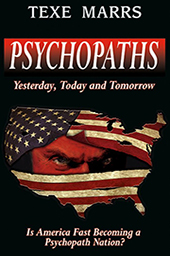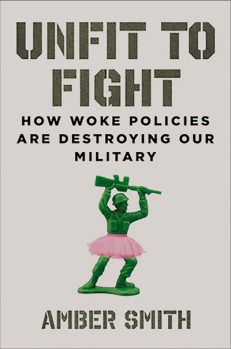Description
In a ‘History of Central Banking and the Enslavement of Mankind’ ex-South African banker Stephen Goodson explains how the Central Banking “scam” originated, and how those who run it have throughout history used their power to subvert governments, and manufacture wars that not only produced vast profits, but frequently to topple ‘regimes’ whose banking system was not under their control.
The ‘scam’ of the money-lenders is the ability to literally create money from nothing, and then lend and accumulate interest on “credit,” and then re-lend that interest for further interest, in perpetuity, that creates pervasive, worldwide debt, from the individual, to the family, to the entire state.
The ability to operate a fraudulent credit and loan system has long been known, and with all the slickness of a snake-oil salesman, the money-lenders – the same types Jesus whipped from the Temple – have persuaded governments that banking is best left to their private interests.
The cultural and material progress of a civilization will often relate to the degree by which it is free from the influence of debt, and the degradation that results when the money-lenders are permitted to abuse their power. Hence, Goodson shows that both World Wars, the Napoleonic wars, the American Revolution, the rise and fall of Julius Caesar, the regicide of Charles I of England, the overthrow of Gaddafi in Libya and the revolution against Tsar Nicholas, among much else in history relate to this “Hidden Hand”.
If you wish to have a real understanding of history – look for the influence of the bankers. This is the key to understanding the past, the present and the future.
4th Edition – March 2019.
Softcover, 202 pages
About the Author
Reviews
Central Banking & Human Bondage: The Works of Stephen Mitford Goodson
Immediately the perceptive reader will be aware of several promising features of these books: The author’s middle name is Mitford, indicating the likelihood of a propensity towards rebelliousness. Next, the author’s dedication of A History of Central Banking to Knut Hamsun, “a beacon of light and hope of the natural world order;” the great Norwegian novelist being a man of honor who refused to bow before Talmudic vengeance upon the defeated of World War II. The next promising feature is a quote from Ezra Pound (a figure akin to Hamsun for his having fought the same malignant forces, defending the same heroic ideals, and having undergone great persecutions in the post-war era) which sets the tone for the book: “And you will never understand American history or the history of the Occident during the past 2000 years unless you look at one or two problems; namely, sheenies and usury. One or the other, or both. I should say both.”
Another interesting feature that immediately faces the reader is that the lengthy preface is written by Prince Mangosuthu Buthelezi, Member of Parliament and long-time leader of the Inkatha Freedom Party. While Prince Buthelezi begins by stating that he “does not endorse the viewpoints” expressed in the book, he also points out that the book is “controversial” and will “engender strong reaction.” The remarks of caution by Buthelezi are presumably necessitated by Goodson, like his Mitford relatives, insisting on documenting certain heresies pertaining to the influence of Jews on politics and finance, and on the achievements of Axis states in overthrowing shylockcracy.
Despite opening with that qualification, Buthelezi nonetheless proceeds to support Goodson’s views on central baking and usury as the main cause of “profound and inhumane differences” within nations throughout the world. Buthelezi declares himself an enemy of that system: “For this reason, for several years, my Party and I have argued that South Africa should reform its central banking and monetary system, even if that means placing our country out of step with iniquitous world standards.” Since that is the case, one suspects that Buthelezi also realizes that the resistance of the Axis states to just this system might have been the real cause of their placing themselves “out of step with iniquitous world standards,” which Goodson subsequently explains. The prince writes: “This work provides not only a broad sweep of the history of economics over almost three millennia, but insights into how the problems of usury have been confounding and enslaving mankind since civilized existence first began.”
A review of Stephen Goodson’s A History of Central Banking and the Enslavement of Mankind
Matthew Johnson, Eurasia Review, 1 May 2014
One of the most difficult things to explain to American university students is how capitalism and communism share far more in common than they do in conflict. In fact, regardless of how it is explained, the old saw that the two approaches are “opposites” can never quite penetrate. Even worse, explaining to students and their bewildered parents that the US banking and industrial conglomerates financed the Soviet Red revolution and built Soviet industry is also maddeningly impossible.
One simple way to explain it is to say that, for bankers in the modern era, the state’s control of the entire economy from one place is what bankers believe paradise to look like. There is one plan, one banking system and one social system in place; this means that banks merely forward the cash, both expecting the state, not the economy as such, to reimburse them with the requisite interest. In other words, the command economy is the most congenial to banks. There is no necessary connection between private banking and a state-owned economy. It is just as simple for a banker to work for the Party as it is for Goldman-Sachs.
Capitalism and socialism are based on materialism. Production and utility alone are considered goods, and efficiency in methods is considered the sine qua non of ethical contemplation. Both systems are oriented to technology, hold to a linear view of history, and seek the mechanization of all aspects of humanity. As they both develop, the economic system and the state merge into a single machine. The error of the libertarians has always been their insistence that the state and private capital are opposed. Quite the opposite is true. Large concentrations of capital are deeply embedded in the state, using it as both a personal bodyguard and as a regulator that keeps market entry impossibly high. The defeat of the Justice Department by Microsoft in 2010-2012 shows the imbalance of power between private capital and the state.
This might seem tangential to a work on banking. For the typical isolated and tenured professor of political economy, it would be. For those, such as Mr. Goodson, who served on the Board of the Central Bank of South Africa for many years, isolated academia seems absurd. Mr. Goodson was anything but isolated, and he witnessed the tight control of economic life by banking conglomerates the world over. He saw it in vivid colors.
This book is not a study in technical economics. It is, thankfully, a study in history. Goodson realizes what most economists do not: that to grasp any economic phenomenon, it must be seen as a product of many decades of historical development. Each aspect of the whole continually reinforces the other, and the whole itself is constantly changing, like an organism, as history continues to present new challenges, new projects and new victims.
In other words, the secret life of banks did not merely occur because a group of men off the coast of Georgia wanted it to. They themselves were actors within a historical stream that goes back to the first Mesopotamian civilizations and reached its ancient zenith in Rome. The fact that the whole has continuously been based on the same set of assumptions regardless of the civilization within which it was embedded is impressive, and it calls out for detailed analysis. Given the political fallout from such honesty, however, Mr. Goodson needed to resign himself to the fact that few in the mainstream will even mention his work, let alone accept it.
There is one constant in history that is manifestly clear in this work: that the essential distinction between monarchy and republicanism (broadly speaking) is economic. Republics are normally oligarchies, or at least contain its seeds. Monarchies, since they are perpetually at war with their own nobility, often reject the assumptions of oligarchy. Whether it be the national socialist party of China or Belarus, the royal bank of St. Petersburg or the centralized dictatorship of the Augustan era, all forms of strong statism has made war on the banking monopoly. No authoritarian leader will accept competition from an all powerful economic mediator. Of course, there are a few exceptions on both sides, but history has been fairly clear that strong states, those based on traditional authority, reject the alchemy of money and interest.




